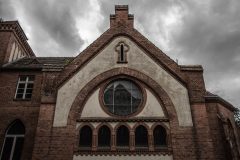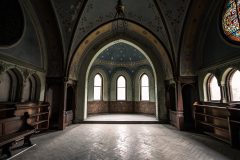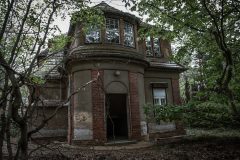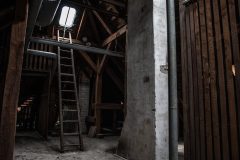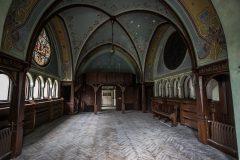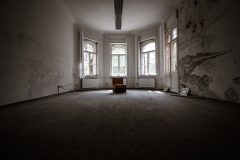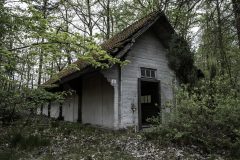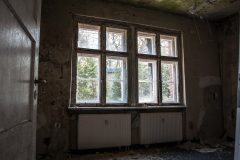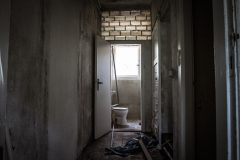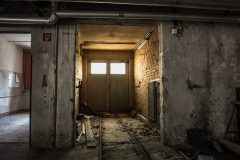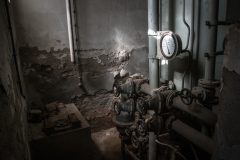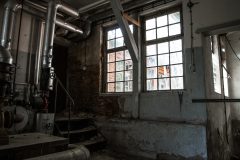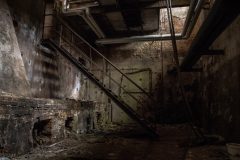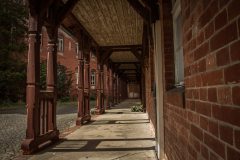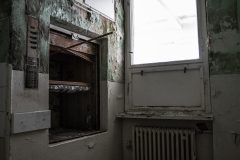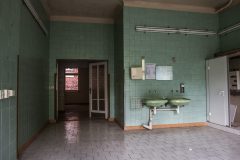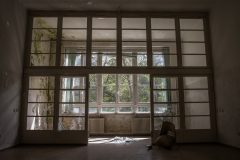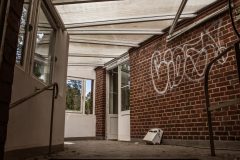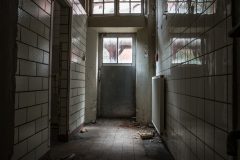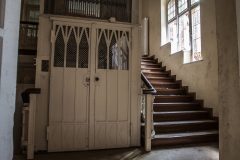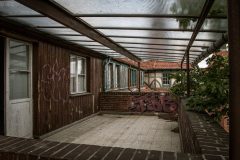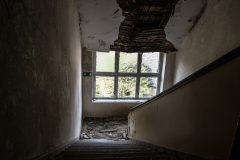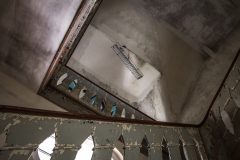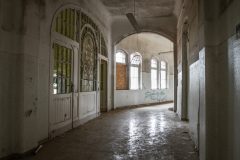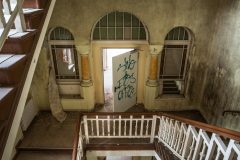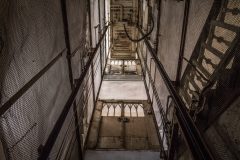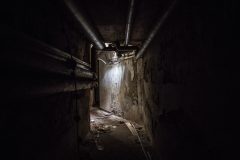In the 19th century, tuberculosis was prevalent in the Cottbus area, particularly affecting female workers in the textile industry (Feintuchwerke Cottbus). Responding to pressure from the physician Carl Thiem, the Brandenburg State Insurance Institution decided in 1897 to construct a sanatorium. They utilized a plot of land in the Cottbus city forest in the municipality of Kolkwitz, which had been donated by the city administration. Construction of a lung clinic, based on designs by architect Theodor Goecke, commenced with the laying of the foundation stone on August 2, 1898. After nearly two years of construction, the clinic was completed and inaugurated on June 13, 1900, with Bruno Bandelier appointed as its first chief physician. The main building and residential houses for doctors and clinic staff were erected, with construction costs estimated at around 500,000 Reichsmark.
One year after its completion, the facility was visited by the physician Robert Koch. In 1912, the clinic acquired X-ray equipment and an operating room. During World War I, operations of the lung clinic had to be temporarily suspended due to financial reasons, and normal operations only resumed from 1924 onwards. In 1925, the complex was expanded to include a mortuary and a cemetery. Towards the end of World War II, the Kolkwitz clinic housed patients from the Carl Thiem Klinikum which had been destroyed by bombs. Eventually, it was converted into a field hospital in 1944.
After the war, the remaining medical staff continued to provide treatments for lung diseases, and from 1946, male patients were also admitted. In 1947, the director’s residence was converted into a children’s ward with 38 beds to accommodate pediatric patients. In 1949, lung treatment, especially surgery, began in Kolkwitz. By the 1950s, with around 300 beds, the Kolkwitz clinic was the largest tuberculosis sanatorium in East Germany. In 1953, the hospital became part of the Cottbus district and was renamed the ‘Bezirkskrankenhaus für Lungenkrankheiten, TBK-Heilstätte Cottbus’.
With the decline in tuberculosis cases, the Kolkwitz clinic was converted into a rehabilitation center for stroke patients in 1972. At the same time, the orthopedic, gynecological, and neurological departments of the Carl Thiem Clinic moved into the building, which also served as an academy for medical training from then on. In 1986, the area was placed under monument protection.
After the end of the GDR, the Kolkwitz clinic returned to the possession of the Landesversicherungsanstalt Brandenburg. In 1995, it was sold to a private investor who later went bankrupt. Since the orthopedic department relocated to the main Carl Thiem Klinikum site in Cottbus in December 2007, the former Kolkwitz clinic has remained vacant. It has since been sold to another investor who plans to convert the building for residential purposes. On October 21, 2021, the roof of an annex building was destroyed by fire.
This place was and can only be visited with the allowance of the owner. It’s all boarded up and heavily guarded, making it a very bad decision to set foot on the property illegally.










